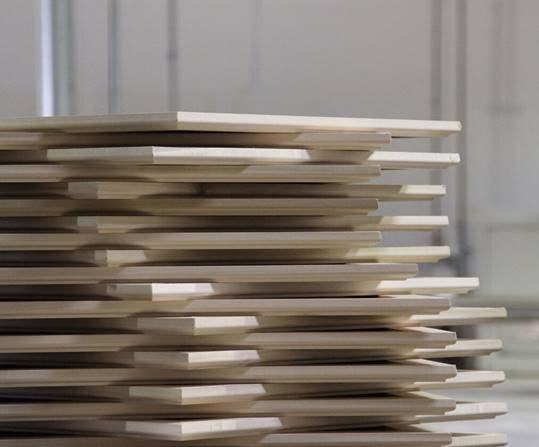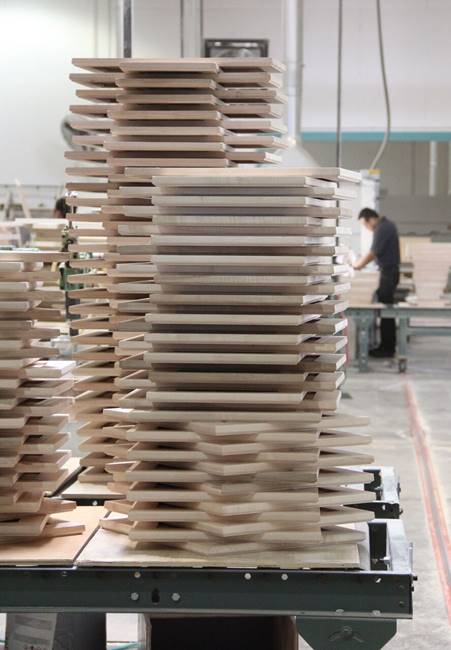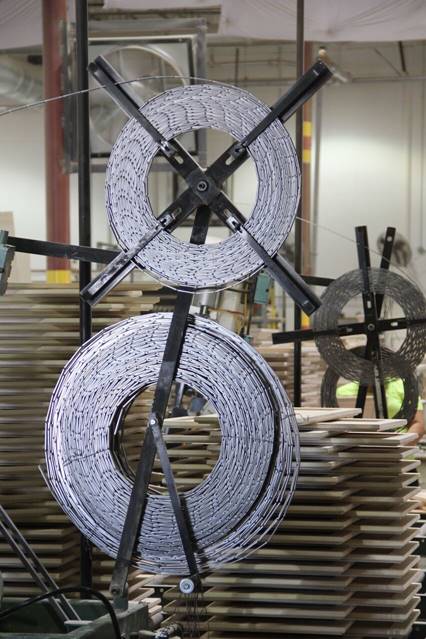Art on the Factory Floor
Artistic integrity is exemplified in the finished product at Woodmont Cabinetry. The art in the process starts right on the factory floor. Whether it’s the stacking practices of their high quality hardwoods that evoke everyone’s favorite childhood game, or the inherent geometric design of our equipment, art is everywhere.
Jenga-esque Sculptures
While the original version of Jenga only stands slightly higher than a foot, more extreme variations of the game have come out since its inception. Some versions even top eight feet and have inspired many DIY projects. On an even grander scale, the 56 Leonard Building in New York, NY, designed by Swiss architects Herzog and de Meuron, stands at 821 feet. Its fifty-seven stories are cantilevered and appear to be stacked one on top of the other, earning it the nickname the “Jenga Building.”
You don’t have to travel as far as New York, though, to see Jenga influences. The aesthetic of Woodmont’s stacked lumber mimics this classic game.

Crisscross-stacking lumber helps to accelerate the seasoning of the wood as it waits its next step, but it also is pleasing to the eye.

Geometric Art
Even the equipment on the Woodmont factory floor easily lends itself to artistic interpretation. Take, for example, the interesting shapes and angles created by this wrapped wire. No one would blame you for thinking this was a sculpture that belonged in a museum of modern art.

Not only does the geometric aesthetic of the factory floor serve as an unexpected surprise, it also creates a pleasant, efficient environment in which to work. Know that when you install Woodmont Cabinetry in your home, the artistry extends even further than the finished cabinetry — it starts on the factory floor.







